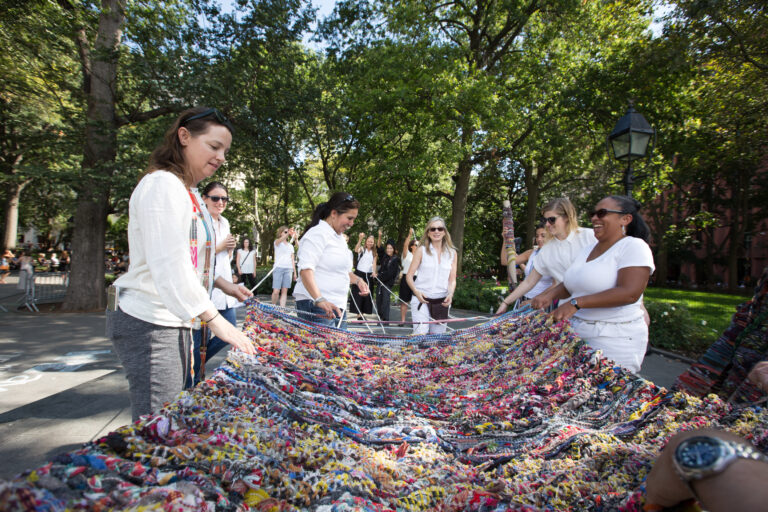Intentional Design
Loop to Loop: Design for Circularity
Designtex’s Loop to Loop platform is created by upcycling our own textile waste. A decade ago, we began an ongoing collaboration with three supply chain partners to collect our textile cutting waste from furniture manufacturing and transform it into new yarn. The new yarn using this waste is woven into an array of upholstery and multi-use fabrics.
Closing the loop on our fabric waste not only yielded the first upholstery pattern Loop to Loop (included in the collection of the Cooper Hewitt Smithsonian Design museum), but also a group of textiles that are consciously designed with future recycling in mind. By avoiding added finishes, backings, and harmful ingredients, these textiles can easily enter a circular system for another life, when their time comes.






